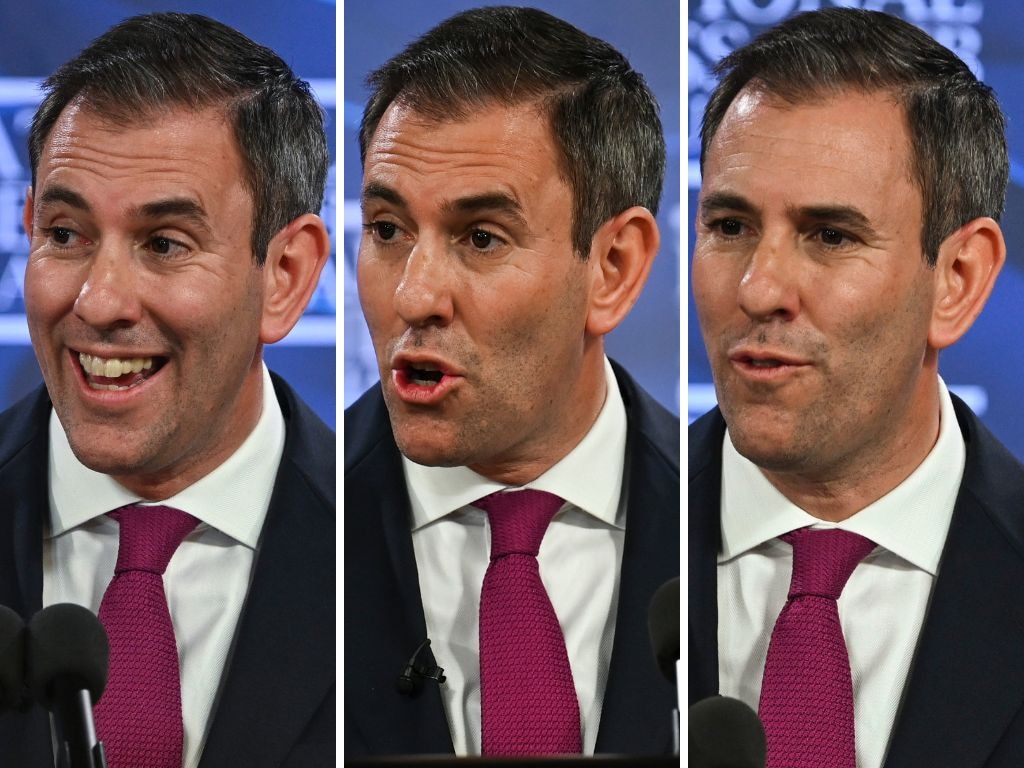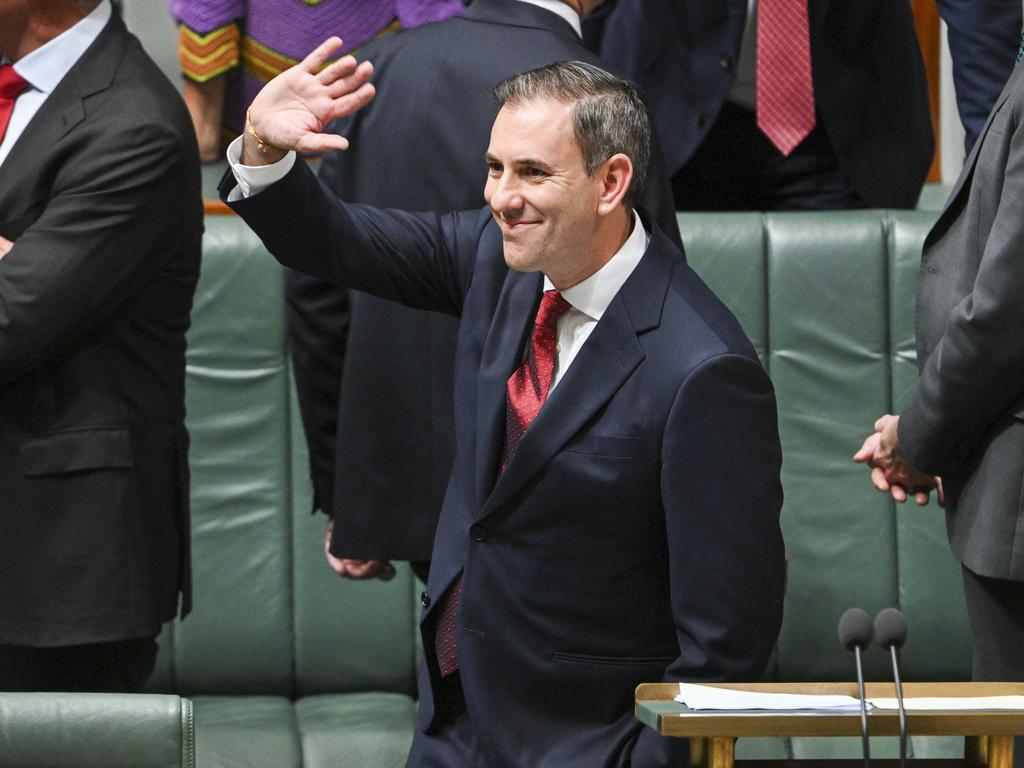It’s Labor, Jim, but not as Bob Hawke and Paul Keating knew it


Yet Chalmers’ third budget shows he is no match for Keating, so he shouldn’t worry about the comparisons. It is a pity because in his first and second budgets there were echoes of Keating with a focus on productivity drivers and cost-of-living relief for those on low and middle incomes, while delivering budget surpluses.
Both treasurers grew up in and represented working-class electorates that reflected their approach to the Treasury portfolio. But they were not limited by their backgrounds; they understood the importance of markets as engines of economic growth and opportunity. They avoided class warfare rhetoric and the politics of envy.
Delivering back-to-back surpluses in 2022-23 and 2023-24 puts Chalmers high on the league table of treasurers with his hero, Keating, and Peter Costello.

Keating and Costello were the only treasurers to deliver surpluses since 1952-53, according to final budget outcomes at the time. So many treasurers promised surpluses but never delivered. The holy grail of politics became a poisoned chalice for weaker treasurers.
Keating made a political virtue of budget surpluses, delivering four, and Costello delivered 10.
Costello used multiple surpluses to claim superior economic management over Labor. For Chalmers to deliver two budget surpluses in a row was a mighty achievement after so many barren years of poor fiscal management by Labor and Liberal treasurers, and escalating debt.
The inflationary crisis provided the perfect opportunity for Chalmers to inform Anthony Albanese and the cabinet there was no other option but to maintain surpluses over the forward estimates to dampen demand and align with the Reserve Bank’s monetary policy settings. With the Reserve Bank not ruling out future increases in the cash rate, and more pain for homeowners, this was a necessity.
Instead, Chalmers squibbed it.
Forget about more budget surpluses, the budget papers show Chalmers is estimated to deliver cumulative deficits of $112.8bn over the forward estimates. He has increased spending from 24.5 per cent of GDP in 2022-23 to 26.6 per cent in 2025-26, and it is estimated to remain at 26 per cent until 2027-28. There was plenty of room for restraint.
In 2023, the Treasurer claimed to be banking 87 per cent of revenue upgrades across two budgets to deliver surpluses and reduce debt. He made much of this in pre-and post-budget interviews.
In 2024, however, this discipline has weakened. Chalmers now claims to be banking 82 per cent of revenue upgrades over the entire forward estimates.

Treasurers need to be able to deliver tough news to their colleagues, bring them along on economic and budget decisions, and ultimately carry the day in cabinet. Chalmers could have argued that it was essential two surpluses became three, with more forecast. This would underscore his personal mission to bury the Coalition’s claim to be the superior economic and budget manager.
In the 1980s and ’90s, Keating reduced government spending from a peak of 27.5 per cent of GDP in 1984-85 to 22.9 per cent in 1989-90, rising to just 24.2 per cent in his final budget of 1990-91. But here’s the thing: Keating not only reduced the growth in spending, he reduced actual spending in three successive budgets to deliver the surpluses as tax receipts fell.
How do Chalmers’ broader ambitions for economic reform stack up against Keating? After all, he wrote his doctorate thesis on Keating as a “statesman” and “brawler”. In his September 2019 Light on the Hill speech, Chalmers spoke about the need to focus on growth rather than redistribution, ignore the fringe socialism of Jeremy Corbyn in the UK and Bernie Sanders in the US, and be fiscally responsible.
Yet his big-spending, interventionist Future Made in Australia policy resembles an old-Labor – even pre-Whitlam era – policy that ignores the efficiency and dynamism that comes from markets in favour of a back-to-the-future-style industry policy of picking winners with regulations, subsidies and equity stakes. What’s next? A taxpayer-led revival of Kodak or Holden?
Chalmers’ talk of a new economic “orthodoxy” diminishes Keating’s legacy because his reforms are dynamic and still paying dividends, whether it is the floating exchange rate, lower tariffs, competition policy or compulsory superannuation. Keating gave the economy a new engine and laid the foundations of long-term prosperity, with real incomes rising 70 per cent in the past 40 years.

Chalmers always wanted to change the legislated stage three tax cuts to deliver more of the benefits to low- and middle-income earners. He tried public and private advocacy, and eventually won.
But there was an opening to bring about broader tax reform. The top marginal income tax rate, 45 per cent, is still too high. And there was no discussion with the states about inefficient state payroll or stamp duties, let alone the GST. It was another missed opportunity.
In his third year as treasurer, Keating had already delivered the most significant post-war economic reform, the float of the dollar, and removed exchange controls, deregulated the financial sector, negotiated the Accord to reduce inflation and was engaged in major tax reform that would see reductions in personal and company tax rates, the introduction of capital gains and fringe benefits taxes, and dividend imputation.
Labor marks two years in power on Tuesday. It has been a mixed record but so far it is too early to make a definitive judgment. It is hard, though, to think of anything big or bold or brave that will be enduring. Albanese and Chalmers are ambitious, and they should blaze their own trail. But let’s have no more of this pretence that they are heirs to the Hawke-Keating model.






Jim Chalmers is frustrated with the endless comparisons to Paul Keating even though he often said before the May 2022 election that he would model himself on the former treasurer and deliver a centrist economic policy that prized opportunity, aspiration and growth alongside budgets of sustained fiscal prudence.